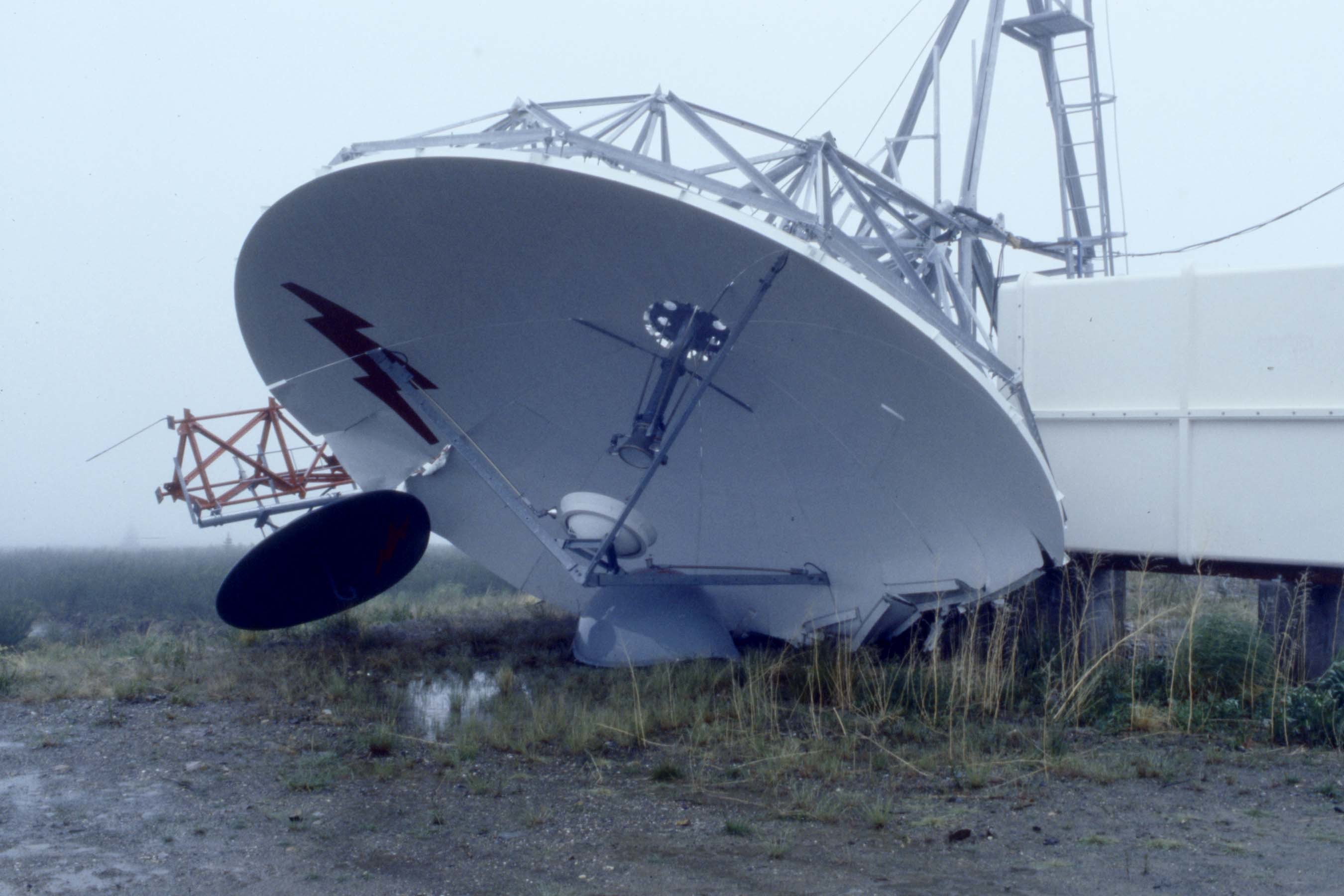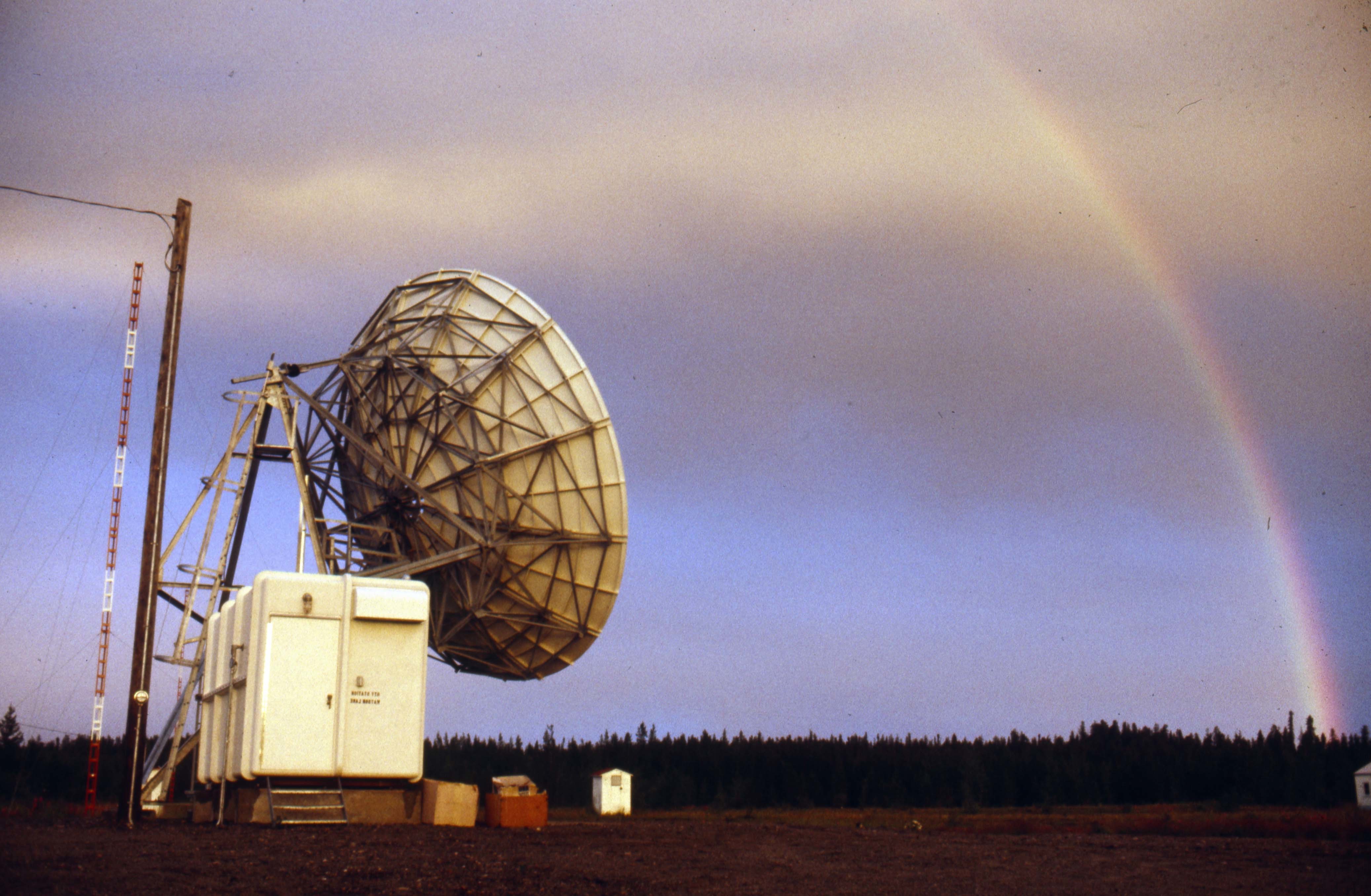July 31, 2018
On the morning of July 13, 1978, it was pouring rain in the Yukon communities of Mayo and Elsa, and kids were stuck inside.
Wanting to stay dry, but needing distraction, they turned to what was still a novelty in the region: their television sets.
CBC was the only channel in the game, and like any other morning 40 years ago, Sesame Street was on.
For half an hour, they laughed and sang along with Big Bird and Oscar the Grouch until, suddenly, the TV signal died and all they could see was grey static.

The region was the centre of what had been Canada’s second-largest silver operation. In 1978, a couple hundred workers and families called these bustling mining towns home.
The United Keno Hill Mines company basically ran the place, and when the mine boss heard the TV signal was down, he got on the phone to CBC and the RCMP. He told them they’d had a severe storm, and the TV tower was down.

The tower that transmitted and relayed the signal to the region was at the top of Galena Hill, an active mine site since at least the 1920s, covered with various buildings and other infrastructure, and burrowed deep with mining tunnels.
When police and a transmitter technician finally reached the tower at the top of the mountain, the scale of the destruction was far beyond what they were expecting. There was no way this was an accident.
!['It looked like some spoiled kid had dumped his expensive [Meccano] set in a heap and jumped on it,' wrote Ray Anderson in a report filed afterwards. (Tim Kinvig)](https://newsinteractives.cbc.ca/craft-assets/images/MAYO-TV-TOWER-031.jpg)
At the foot of the mountain in Elsa, Mike Mancini was a teen enjoying the summer before his last year of high school.
He remembered how big a deal it was for everyone in the community when TV first arrived.
"You gotta picture it, I remember the TV, it was just a black and white little thing, and we were just glued to it."

Mancini said the little boxes opened those isolated communities up to the rest of Canada and the world.
"The topic of conversation was broader. You get the news and hockey games. Around the dinner table, there was discussion of more than just the basic everyday life,” said Mancini. “It broadened everybody's perspective for sure."
But then, within a blink, that connection with the rest of the world vanished.
As hundreds of residents in Mayo and Elsa were left wondering why their television sets had suddenly gone dark, a team of techs were converging at the site of the tower.
None of them were counting on what they were about to see when they got there, and it was only then that the full scale of the work ahead of them came into perspective.
“It looked like some spoiled kid had dumped his expensive [Meccano] set in a heap and jumped on it,” wrote technician Ray Anderson in a report filed to CBC operations afterwards, referring to the children's toy construction sets.
II.

After driving up from Whitehorse, Anderson was one of the first on the scene.
He was one of CBC Yukon's most prolific transmitter techs, and spent his working years climbing to the tops of towers, hundreds of feet in the air. Now retired, he still spends his time tinkering and engineering new projects.
“The 25-foot dish was torn from its mounts and flung with such force it dug a hole in that rocky ground about a foot deep."
“The tower had been deliberately dropped," he wrote, describing the efforts someone went to to bring the tower down.
"The person or persons had worked on about 30 bolts or so and there were nuts, bolts and washers all over.”

The unknown person had tried to undo different clamps and sections of the tower. They had even tried to loosen the guy wires — tensioned cables designed to add stability to free-standing structures — not knowing how dangerous that was.
“If the guy wire had slipped through the clamps, it likely would have cut the person in half,” Anderson wrote.
Eventually, after what clearly took a lot of time and effort, the tower came down.
"The force must have been fantastic."
"The full force of the TV tower came down on top of the (satellite) tower,” wrote Anderson. “The 25-foot dish was torn from its mounts and flung with such force it dug a hole in that rocky ground about a foot deep."
"When the tower kicked back, both the TV transmitter and the rack of microwave equipment were jerked right from one side of the building to the other by their cables. The whole building was lifted toward the tower about two inches. The force must have been fantastic."
Anderson told reporters it would take months to repair.

III.
People in the communities quickly started to wonder who had done this.
According to Mike Mancini, rumours focused in on one man, a worker at the mine who had just been fired.
“I guess he thought that was the biggest thing that could be done to sabotage everything."
There was an investigation by Mayo’s RCMP detachment, but any records related to their work are long gone. Mancini says he understands police did eventually track the man down in Ontario.
“My understanding is he was upset at the mining company,” said Mancini.
“In his mind, I guess he thought that was the biggest thing that could be done to sabotage everything and make an impression.”
Ray Anderson wasn't going to let that impression last. He and his crew got to work immediately.
IV.
They were flying by the seat of their pants.
They cobbled together cables and parts from old transmitters and former mine sites nearby. They drove back and forth from Elsa, Mayo and Whitehorse. Trucks broke down. It kept raining.
Everybody chipped in. The mine helped repair their vehicles, and mill new parts. Workers bunked together so Anderson and his crew had places to sleep.
“Everybody was this way, putting themselves out to give us a hand. It sure was humblizing [sic],” he wrote in his report.

They used loaders, cranes and old ore cars filled with mud and dirt to slowly raise the poles and towers back up to their heights.
They even used eight-by-eight pieces of lumber and their own feet to jump on and hammer out the bent microwave dishes.
"The tools were crude but the dish didn't look bad so we dragged it up the pole and got it mounted,” Anderson wrote.
Then, it was time to try a TV set.
There were pictures.
“They were pretty ragged and very little sound, but there.”
Anderson and his crew got the signal back up by around 5:30 in the evening on July 24, 1978. It only took 11 days.
In the last line of his report, Anderson wrote:
"By the way, the 24th was the first day it didn't rain since the tower went down."

